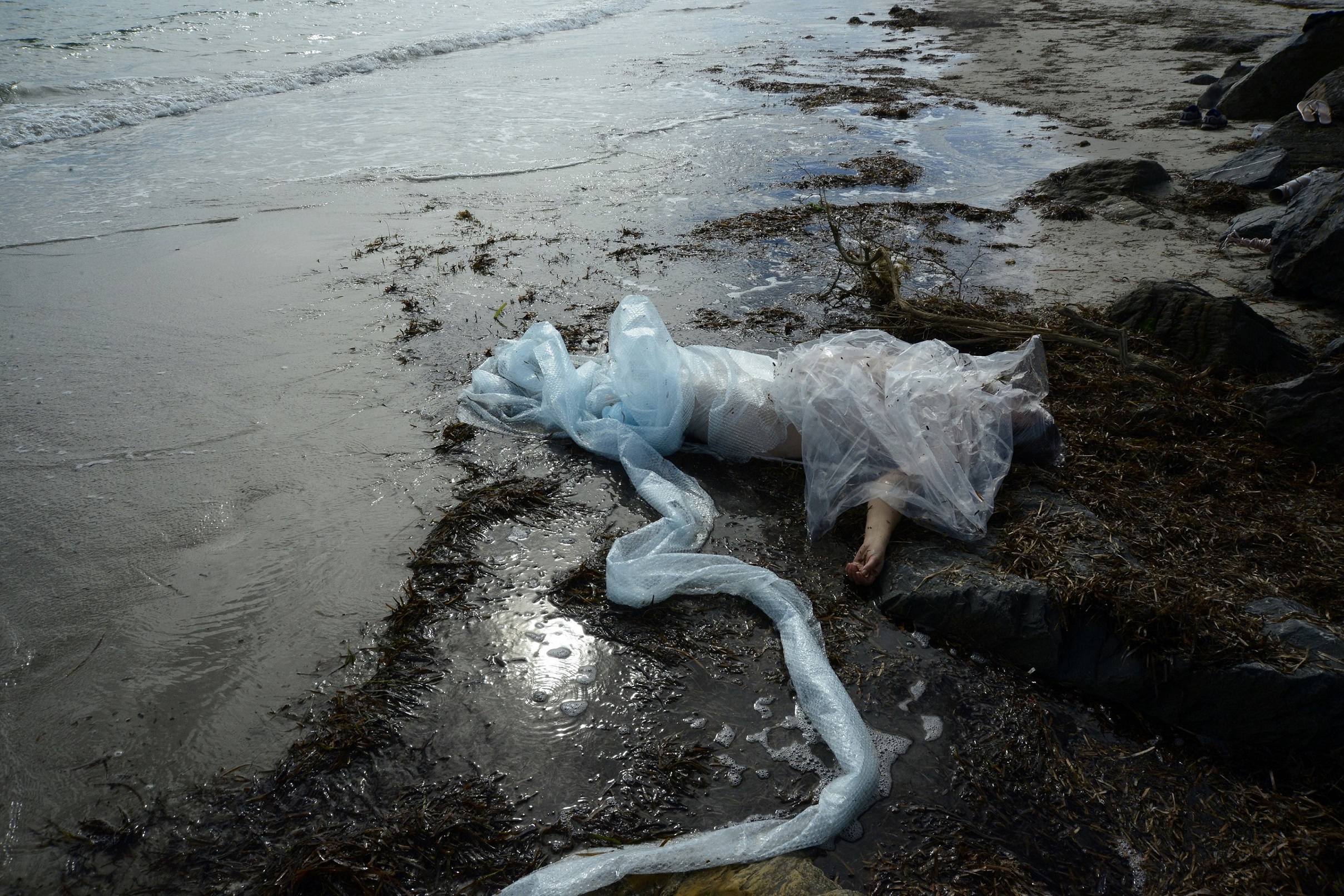
“Plastics memento Mori”, is a series of images which evoke the horror of the plastics problem and are a reminder of the inevitability of mortality. Memento mori works suggest that we take responsibility for our actions. Incorrect actions invariably lead to our demise. These images are grave, as critical issues demand serious responses.
Plastic fantastic? It’s interesting that good intentions can go awry. We may speculate about the future applications of novel technologies however they often have unforeseen implications. This ideology goes back to ancient times and is evidenced in Promethian myth. Fossil fuel plastics have saved lives. They were developed to alleviate pressure upon organic resources under threat due to high demand; whale products, tortoise shell, ivory, bone, sea shells, fur, leather and plant matter. In comparison to natural products, plastics are cheap, broadly available in a wide range of consumer products and are therefore economically democratic. Plastics, used extensively in the medical sciences continue to save lives. It must be appreciated that the benefits also come at a cost. Humans have not behaved responsibly with regard to plastic waste. We have tended to ship our waste off shore, making plastics an ‘out of sight out of mind’ situation. With a life span beyond producer’s and consumer’s needs, plastics have become a serious threat for all life on earth. Beyond obvious impact upon wildlife and environments that have ingested or become suffocated in its mass, plastics break down into almost invisible microplastics that are now ubiquitous and are believed to disrupt the health of all living organism. In order to heighten feelings of empathy I have put myself into the picture, replacing the animal as victim, as unfortunately humans often have a hierarchical view of the world, placing themselves above other lives. This anthropocentric viewpoint is futile as wellbeing is interdependent with a complex and healthy biosphere. As part of the ANAT Synapse residency at the Centre for Marine Bioproduct Development (CMBD) we are working with marine macro algae to produce biodegradable bioplastics to investigate more hopeful narratives and try to do better for humans, animals, plants and the environment.
Background:
BBC Plastics Watch, The Wonder of Plastic, 22 June 2018 https://www.bbc.co.uk/programmes/p06bvjgf
Sea Turtle with Straw up its Nostril: NO TO PLASTIC STRAWS, 10 Aug 2015 https://www.youtube.com/watch?v=4wH878t78bw
Daly N, For Animals, Plastic Is Turning the Ocean Into a Minefield, June 2018 https://www.nationalgeographic.com/magazine/2018/06/plastic-planet-animals-wildlife-impact-waste-pollution/
TATE Art Term – Memento Mori, https://www.tate.org.uk/art/art-terms/m/memento-mori “Memento mori is a Latin phrase meaning ‘remember you must die’…A memento mori is an artwork designed to remind the viewer of their mortality and of the shortness and fragility of human life.…Closely related to the memento mori picture is the vanitas still life. In addition to the symbols of mortality these may include other symbols such as musical instruments, wine and books to remind us explicitly of the vanity (in the sense of worthlessness) of worldly pleasures and goods. The term originally comes from the opening lines of the Book of Ecclesiastes in the Bible: ‘Vanity of vanities, saith the Preacher, vanity of vanities, all is vanity.’ The vanitas and memento mori picture became popular in the seventeenth century, in a religious age when almost everyone believed that life on earth was merely a preparation for an afterlife. However, modern artists have continued to explore this genre.”